Hexagonal shaped GaN quantum dot embedded in AlN (wurtzite)
Attention
Figures in this tutorial are transferred from old documentation and are consistent with nextnano³ input files. They differ from results obtained with nextnano++ as these input file has been improved, including change of simulation domain and boundary conditions, to represent results from the cited publication more accurately. However, qualitative tendencies are preserved.
Header
Note
The tutorial is based on [Andreev2000].
- Input files in examples\quantum_dots\:
QD_GaN_Andreev_PRB_2000_1D_nnp_band-offsets.in
QD_GaN_Andreev_PRB_2000_1D_nnp_strain.in
QD_GaN_Andreev_PRB_2000_1D_nnp_strain-PzPr-poisson-1b.in
QD_GaN_Andreev_PRB_2000_1D_nnp_strain-PzPr-poisson-6kp.in
QD_GaN_Andreev_PRB_2000_3D_nnp.in
- Scope:
The influence of strain and pyro-/ piezoelectric fields on the electronic structure of hexagonal shaped GaN/ AlN quantum dots.
Conduction and valence band alignment in AlN/GaN QWs (unstrained)
In this section the input file QD_GaN_Andreev_PRB_2000_1D_nnp_band-offsets.in is used to compute band offsets.
Figure 2.4.202 shows the conduction and valence band edge alignment in AlN/GaN structures (unstrained). In AlN, the light hole (LH) is the highest valence band whereas in GaN, this is the heavy hole (HH). We assumed a valence band offset of VBO = 0.5 eV, the conduction band offset is much larger (CBO = 2.3 eV). All material parameters are based on [Andreev2000] although meanwhile better parameters are available.

Figure 2.4.202 Conduction band edge (CB) and valance band edges (HH, LH, CH) of the 1D AlN/ GaN QD (unstrained).
Conduction and valence band alignment in AlN/GaN QWs (pseudomorphically strained)
In this section the input file QD_GaN_Andreev_PRB_2000_1D_nnp_strain.in is used to show impact of the strain on the band edges without piezo effects.
Figure 2.4.203 shows the conduction and valence band edge alignment in the AlN/GaN structure, which is strained with respect to the AlN substrate. The lattice constants in GaN are larger than in AlN, thus GaN is compressively strained. The AlN band edges are the same as in Figure 2.4.202, only the GaN edges have changed:
The band gap of GaN has increased (compressive strain increases the band gap).
Now the crystal-field split-hole (CH) in GaN lies above the light hole (LH) and close to the heavy hole (HH).
The valence band offset has decreased to VBO = 0.46 eV.
The conduction band offset has decreased to CBO = 2.15 eV.
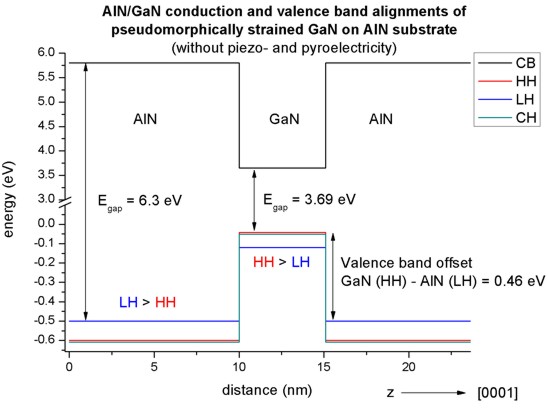
Figure 2.4.203 Conduction band edge (CB) and valance band edges (HH, LH, CH) of the 1D AlN/GaN QD (strained on AlN substrate).
Conduction and valence band edges in AlN/GaN QWs (pseudomorphically strained, including piezo- and pyroelectric fields)
In this section the input file QD_GaN_Andreev_PRB_2000_1D_nnp_strain-PzPr-poisson-1b.in or QD_GaN_Andreev_PRB_2000_1D_nnp_strain-PzPr-poisson-6kp.in can be used to observe piezo effect on the design.
In Figure 2.4.204 the effect of piezo- and pyroelectric fields on the band edge is shown. The band edge gets tilted due to the additional electric potential arising from the piezo- and pyroelectric charges. The electrostatic potential which is the solution to the Poisson equation is also shown in Figure 2.4.204.
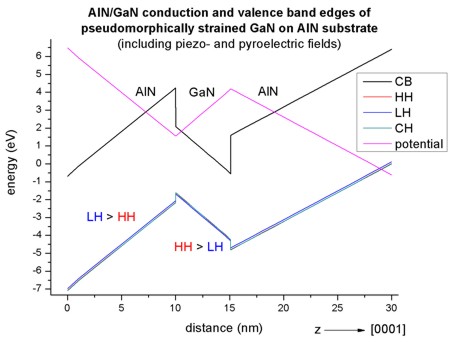
Figure 2.4.204 Conduction band edge (CB) and valance band edges (HH, LH, CH) of the 1D AlN/GaN QD (strained on AlN substrate) including piezo- and pyroelectric fields.
Electron and hole wave functions in AlN/GaN QWs
Figure 2.4.205 shows the electron and hole wavefunctions (
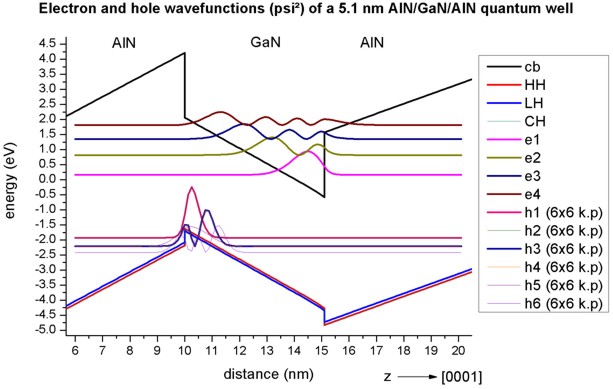
Figure 2.4.205 Electron and hole wavefunctions
Hexagonal shaped GaN quantum dot embedded in AlN (wurtzite)
The simulated hexagonal GaN quantum dot (height = 4.1 nm) is embedded in an AlN matrix, input file QD_GaN_Andreev_PRB_2000_3D_nnp.in. The wetting layer is 1 nm thick and consists of GaN. The structure and a cross-section of the structure along x-y are shown in Figure 2.4.206 and Figure 2.4.207, respectively.
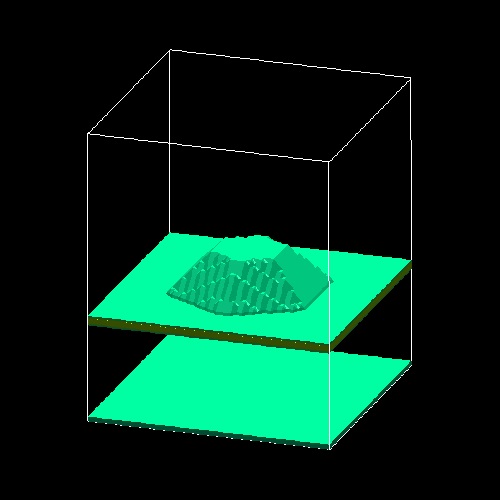
Figure 2.4.206 3D AlN/GaN quantum dot.
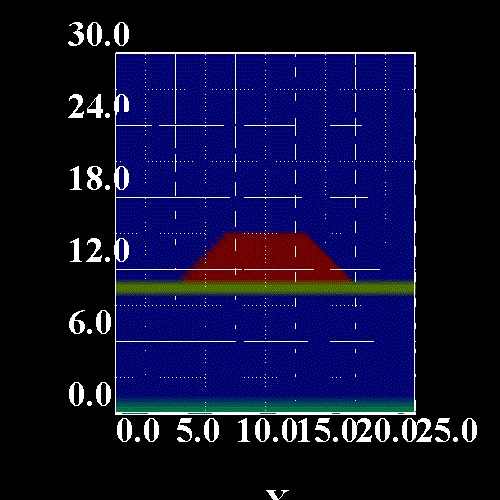
Figure 2.4.207 Cross-section of the hexagonal shaped AlN/GaN quantum dot.
The strain tensor components of a line through the center of the quantum dot along the z axis are shown in Figure 2.4.208. This figure is related to Fig. 2 (a) in [Andreev2000].
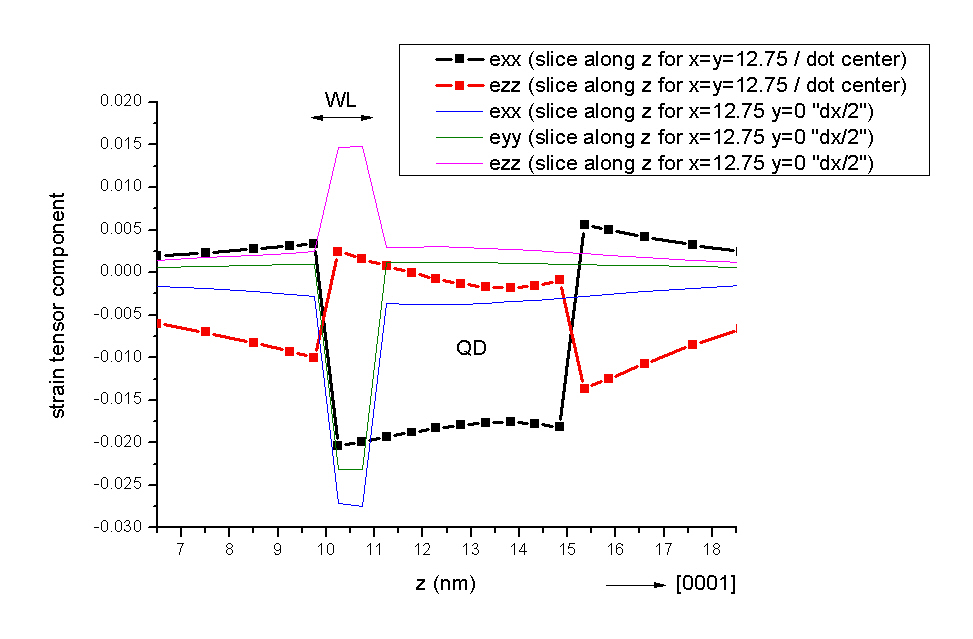
Figure 2.4.208 Strain tensor along the z-axis through the points (x, y) = (12.75, 12.75) nm and (x, y) = (12.75, 0) nm.
Figure 2.4.209 and Figure 2.4.210 show the strain tensor components along the [10-10] direction (y direction) for a line through the bottom of the quantum dot and for a line through the wetting layer, respectively. These figures are related to Fig. 2 (b) in [Andreev2000].

Figure 2.4.209 Strain tensor along the y-axis through the quantum dot (QD).

Figure 2.4.210 Strain tensor along the y-axis through the wetting layer (WL).
The strain induced piezoelectric fields and the pyroelectric fields lead to the electrostatic potential which is shown in Figure 2.4.211 and Figure 2.4.212. The figures of the potential are related to Fig. 4 in [Andreev2000]. In Figure 2.4.211 one can clearly see that the electrostatic potential has its maximum at the top of the QD and its minimum in the wetting layer area just below the QD. Figure 2.4.212 shows a cut of the electrostatic potential through the wetting layer plane.

Figure 2.4.211 Electrostatic potential inside the quantum dot.

Figure 2.4.212 Electrostatic potential inside the wetting layer.
The conduction and valence band edges are shown in Figure 2.4.213 and Figure 2.4.214. One can clearly see that the conduction band minimum is located in the top of the quantum dot whereas the maximum for the valence band is located inside the wetting layer (WL) (which is equivalent to the bottom of the quantum dot). Thus, one expects the electrons, which are located in the top area of the QD, to be spatially separated from the holes, which are located in the WL (bottom of the QD). The energy scale is in units of [eV]. The figures of the conduction and valence band edges are related to Figs. 5 and 6 in [Andreev2000].

Figure 2.4.213 Conduction band edge of the QD.

Figure 2.4.214 Valence band edge of the QD.
The electron states are located near the top of the quantum dot where the conduction band has a minimum. Figure 2.4.215 shows the electron ground state.
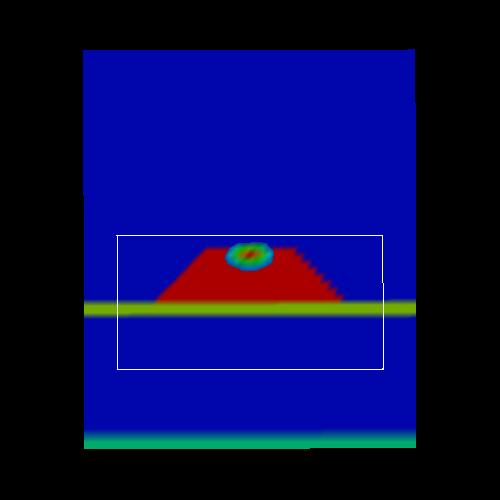
Figure 2.4.215 Electron ground state of the QD.
The following figures show the six lowest electron states of the quantum dot. The
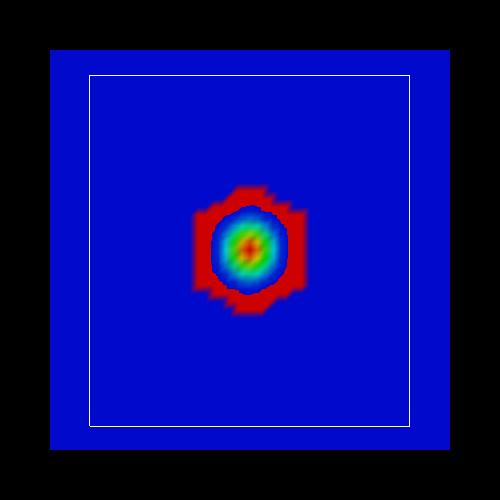
Figure 2.4.216 Probability density

Figure 2.4.217 Probability density
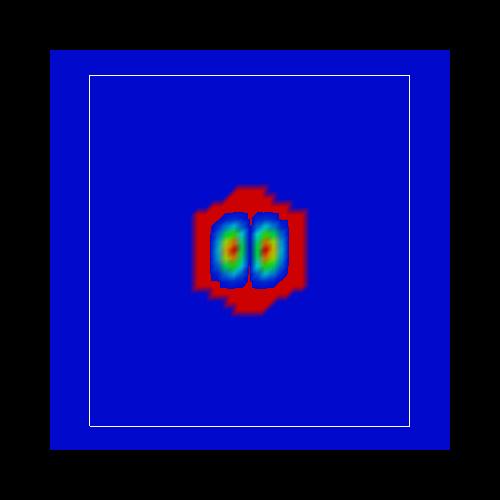
Figure 2.4.218 Probability density
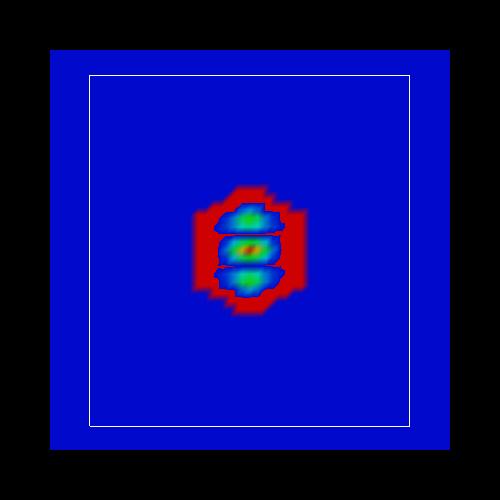
Figure 2.4.219 Probability density

Figure 2.4.220 Probability density

Figure 2.4.221 Probability density
Version of this tutorial for nextnano³ can be found here .
Last update: 11/07/2024